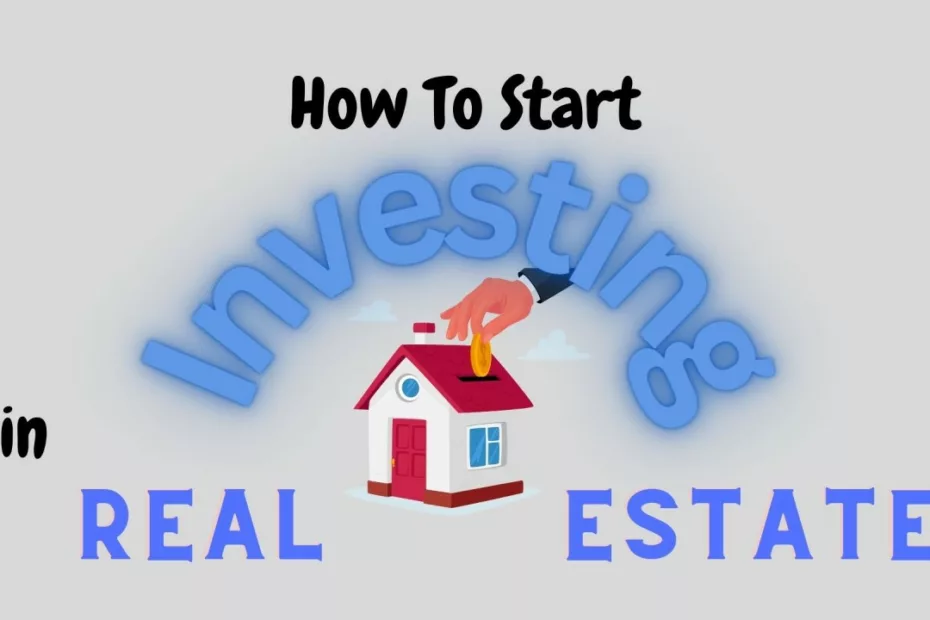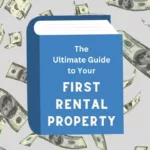I have been investing in real estate for more than 16 years. I have over 70 rental properties, have done many flips, sold houses wholesale, and am a hard money lender. I’ll teach you how to start investing in property.
This article will show new investors how to invest in rental properties, flip properties, and how to wholesale properties. It will not include hands-off investment strategies like real estate investment trusts (REIT) and real estate crowdfunding platforms.
How to Use the Guide
This section will show a novice investor how to use the article to start investing in property. Start by understanding the fundamentals, regardless of the type of real estate investment you are interested in.
Once you understand the fundamentals, familiarize yourself with the various real estate investing strategies. This guide will omit risky or difficult strategies reserved for the experienced investor. It is essential to understand the multiple strategies and adequately deploy them.
After understanding the strategies, you should learn about the type of funding available. There are several funding methods, and each has a specific use.
The final section will show you how to find the deals. This is the most challenging part of being a real estate investor. Once you find a deal, you must act quickly. It’s essential to understand this entire article before looking for deals.
Fundamentals
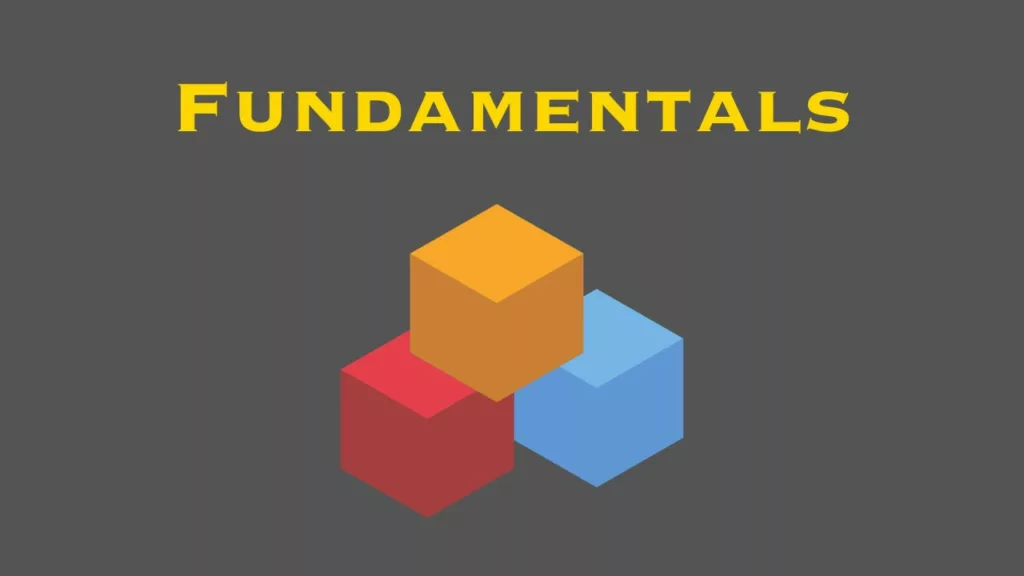
Market Value
The market value of real estate is the price that a property would sell for when exposed to the current market for a reasonable amount of time. This value assumes that both the buyer and seller are knowledgeable about the property and acting in their own best interests.
Various factors, including location, condition, size, age, and the current supply and demand in the local market, influence the market value. In addition, factors such as interest rates, economic conditions, and government policies can also impact the market value of real estate.
How to Determine Market Value
To determine the market value of a property, real estate investors typically use a combination of methods, including analyzing comparable sales data, evaluating the condition and features of the property, and considering current market trends. The investor will consider all these factors to arrive at an estimated market value reflecting the most probable price the property would sell for in the current market.
Margin of Safety
The margin of safety is a fundamental principle in investing that refers to the difference between the intrinsic value of an investment and its price. If the intrinsic value is higher than the market price, investors have a margin of safety. This means that even if they made a mistake in their valuation or the market changes, they would still have a cushion between the purchase and market prices.
The term margin of safety was coined by Benjamin Graham, who is widely regarded as the father of value investing. Graham, a mentor and teacher to Warren Buffett, was a prominent financial analyst and investor who introduced the idea of the margin of safety in his book “The Intelligent Investor.” In this book, published in 1949, he emphasized the importance of buying stocks with a margin of safety to reduce the risk of losses and increase the potential for gains.
Margin of Safety in Real Estate Investing
The Margin-Of-Safety concept can be applied to real estate investing. In this context, the margin of safety refers to the difference between the market value of a property and the price that an investor pays for it.
To calculate the margin of safety in real estate investing, an investor needs to estimate the property’s market value by analyzing factors such as location, condition, size, and comparable sales. Once the investor has determined the market value, they can use it to determine a purchase price that provides a margin of safety.
If the market value is higher than the purchase price, the investor has a margin of safety. This means that even if the market value of the property declines or the investor’s estimates are incorrect, there is still a cushion of security in the form of the difference between the price paid and the market value.
The margin of safety is essential in real estate investing because it helps investors reduce their risk of losses and increase their potential for gains. By buying properties with a margin of safety, successful investors can protect themselves against the uncertainty of the market and increase their chances of long-term success.
Purchase Price
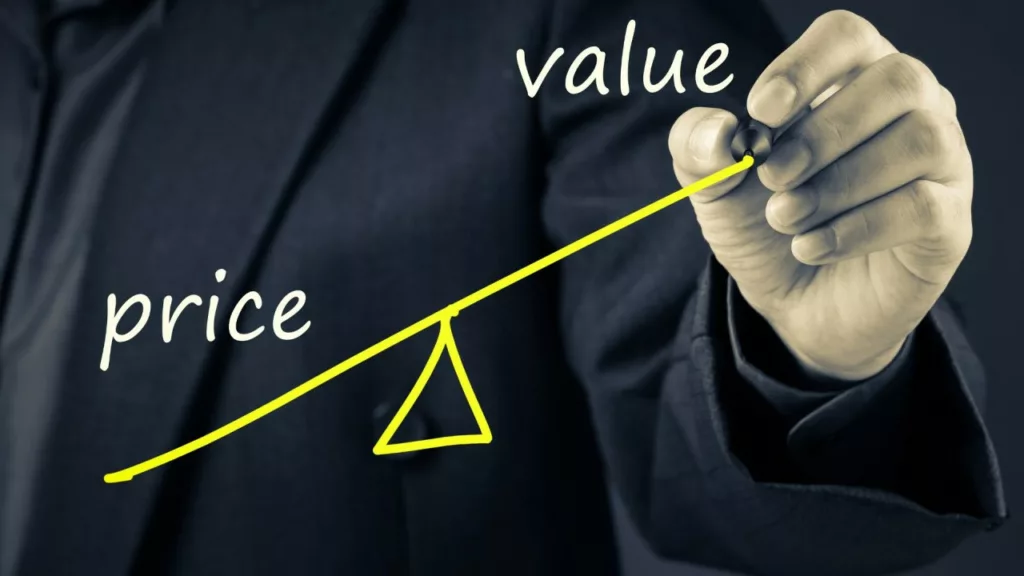
The purchase price is a critical factor in real estate investing because it directly affects the profitability, cash flow, level of risk, and ability to finance the investment. It is essential for investors to carefully evaluate the purchase price and ensure that it aligns with their investment goals and objectives. The most important factor when buying investment real estate is to ensure that the price paid is significantly below market value and provides an acceptable margin-of-safety
Purchase Price and Profitability
The purchase price of a property is a critical factor in determining its profitability. The return on investment (ROI) formula is the profit divided by the cost multiplied by 100: (profit/cost)*100. In this equation, the lower the purchase price, the higher the result.
Purchase Price and Cash Flow
The purchase price of a property can also impact its cash flow. If an investor pays too much for a property, minor problems, and unforeseen expenses can turn a winning deal into a loser. On the other hand, when the investor only buys good deals at a significant discount to the market, they have more room for mistakes.
Purchase Price and Risk
The purchase price of a property can also impact its risk level. If an investor pays a higher price for a property, it can increase the risk of a financial loss if the property does not perform as expected. Conversely, if an investor pays a lower price, it can reduce the risk of financial loss.
Purchase Price and Financing
The purchase price of a property can also impact the ability to finance the property. Investors paying a higher price will start with less equity and a higher loan-to-value (LTV). With a lower LYV, financing is more challenging, and the terms less favorable. Conversely, if an investor pays a lower price, they start with more equity, easing the financing challenge.
The Number One Rule in Real Estate Investing
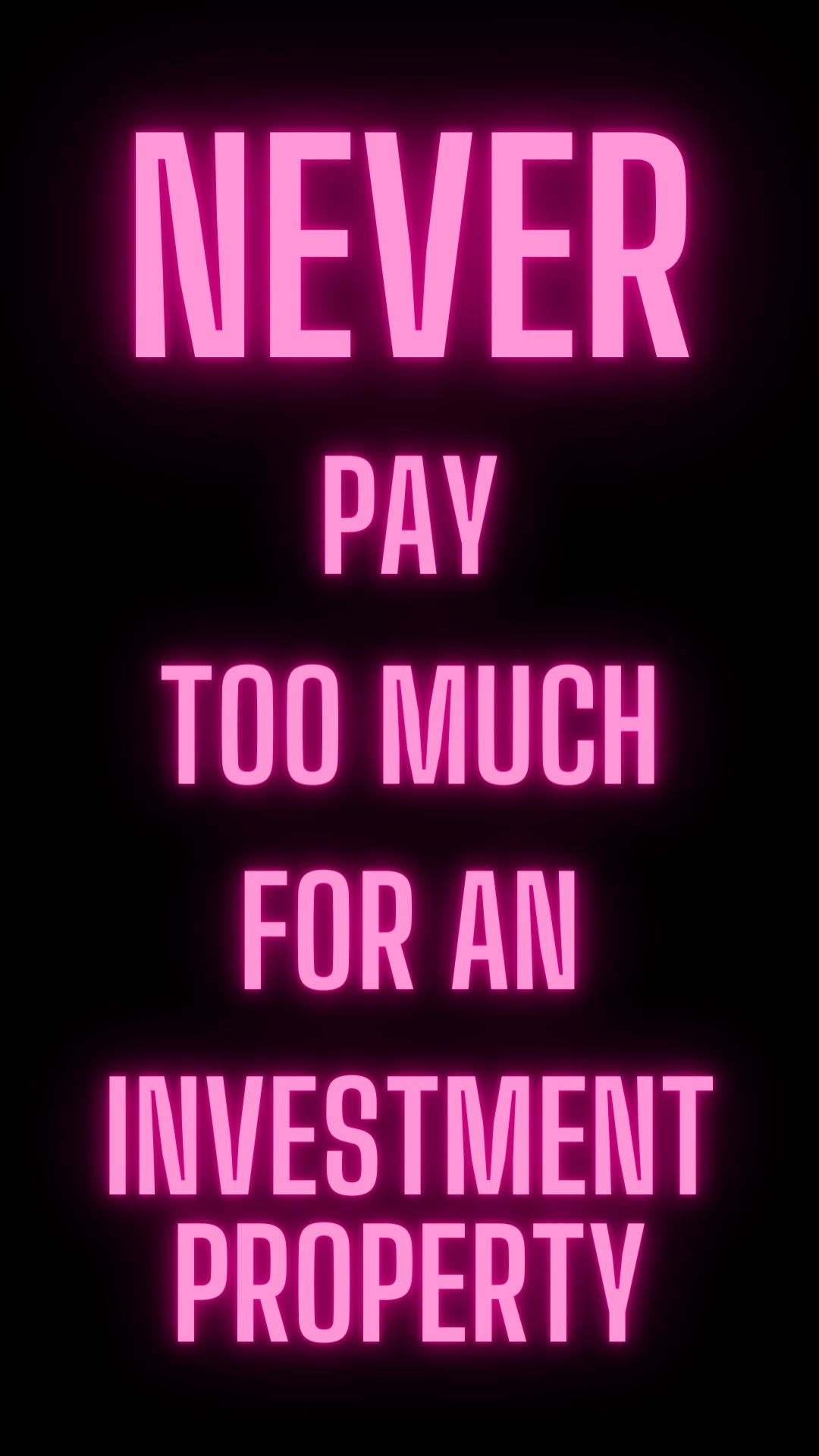
Never pay too much for an investment property. This is the number one rule of real estate investing. Almost all other risks are mitigated by paying less for the property.
If you only learn one thing from this article, let it be this: never spend too much on investment real estate. This is the easiest rule to follow. If the price doesn’t work, then don’t buy the house.
Strategies
Rental Houses
Rental property investing, or buy-and-hold investing, is a type of real estate investment where investors purchase a property to rent it out to tenants to generate rental income. The goal of rental property investing is typically long-term wealth building, as investors aim to accumulate properties that create a steady stream of rental income over time.
Income
Rental properties generate income through rental payments from tenants who lease the property. This income can provide short-term cash flow and long-term appreciation for the rental property owner.
Cash flow refers to the income generated from rental payments after all expenses, such as mortgage payments, taxes, and maintenance costs, have been paid. Rental properties can generate a reliable source of cash flow, providing rental property owners with monthly income.
Passive income generated by rental properties can provide a reliable source of long-term wealth building for rental property owners. While the cash flow generated from rental payments provides immediate income, the property’s long-term appreciation can provide a source of passive income and long-term wealth.
Expenses
When investing in single-family homes, expenses are usually more than the typical investor expects. A good rule of thumb is to expect expenses to be about 40% of the rent collected. This number is cited in academic studies, and my rental expenses align with this prediction. To understand how this number is calculated, read my complete guide to rental property expenses.
Rental property expenses include maintenance costs, property taxes, and insurance. However, mortgage payments are not part of the 40% expense calculation. These costs can vary based on the location and type of property and can significantly impact the overall profitability of the rental property investment.
Pros of Rental Investing
- Potential for generating passive income through monthly rental payments
- Opportunity for capital gains through appreciation in property value
- Tax benefits, such as deductions for mortgage interest and property taxes
- Diversification of investment portfolio through real estate assets
Cons of Rental Investing
- Costs associated with owning and maintaining a rental property, such as maintenance and repairs, can cut into profits.
- Finding and retaining tenants can be challenging, leading to vacancy periods impacting cash flow.
- Economic downturns can lead to decreased demand for rental properties, impacting cash flow and property value.
- Legal and regulatory requirements, such as landlord-tenant laws, can be complex and time-consuming.
How Much Should You Pay?
Acquisition Cost: the total cost associated with purchasing an asset, such as a rental property.
When investing in rental property, the purchase price is irrelevant. The total acquisition cost is what matters. This number is the total amount invested.
The acquisition cost will include the purchase price, all closing costs, and any renovation costs necessary to make the property rent-ready. Below are four methods for determining an investor’s acquisition cost limit.
Rent Multiple
When purchasing a rental house as an investment property, a general rule of thumb is never to pay more than 50 times the monthly rent. This means that if the monthly rent is $1,000, the acquisition cost of the property should not exceed $50,000.
Purchasing Rent
Another way to determine how much an investor should pay for a rental house is to never pay more than $5,000 for every $100 monthly rent. For example, if the monthly rent is $1,000, the maximum invested in the property should not exceed $50,000.
Percent of Investment
A third method for calculating your maximum acquisition cost is to ensure that the monthly rent is at least 2% of the amount invested. For a property that requires $50,000 to purchase and make rentable, the monthly rent should be at least $1,000.
Gross Rent Multiplier (GRM)
A final way to evaluate the value of an investment property based on its rental income is the Gross Rent Multiplier (GRM), a metric used to. The GRM is calculated by dividing the property’s purchase price by its annual gross rental income. An investor should never pay over a GRM of 4.2 for a rental house. For example, if a property is renting for $1,000 per month, and the investor is targeting a GRM of 4.2, the maximum purchase price for the property should be $150,400 ($1,000 x 12 months x 4.2 GRM).
A Final Word on Acquisition Cost of a Rental
This article has presented four methods for calculating the maximum acquisition cost, and the investor should keep in mind that this is the maximum acquisition cost. Adjust the acquisition cost downward to compensate for bad neighborhoods, risky renovation projects, and deals filled with hassle.
Although each method may differ in specifics, they all produce the same result. You don’t need to use all the rules; pick one and stick with it. I prefer the 50 times rent rule; it’s easy to calculate on the fly.
- Never pay more than 50 times the monthly rent.
- Never spend more than $5000 to purchase $100 in monthly rent.
- Ensure the monthly rent is at least 2% of the acquisition cost.
- Don’t pay more than 4.2 times the yearly gross rent.
This is the easiest rule in real estate investing. If the transaction does not meet these rules, don’t buy it.
Special Notes on Rental Investing
The work begins after you have purchased the house and completed the renovation. It’s essential to efficiently manage rental properties for maximum profit. A landlord must handle maintenance issues and ensure that vacancies are minimized.
These are some tips for being an effective landlord:
- Don’t use a property management company. This article explains why investors should manage the properties themselves – at least initially.
- Ensure that your tenants pay rent on time. This article will teach you how to deal with non-paying tenants.
- For more information, check out this guide to buying your first rental property.
Flipping Houses

Flipping houses is a real estate investment strategy in which an investor purchases a property to quickly renovate and resell it for a profit. The investor typically buys a distressed property that needs significant repairs or updates to increase its value through renovations and upgrades.
Income
Compared to rental houses, the income from house flipping is straightforward. This income comes from the difference between the purchase and selling prices of the property minus the costs associated with the purchase, renovation, and sale of the property. The income from house flipping can be substantial, but it is a one-time windfall with no recurring cash flow.
Expenses
The expenses in flipping a house are similar to those from the renovation stage of rental house investing. With a flip, the renovation is generally more expensive because higher-grade components are needed to stand out in the housing market. In addition, an investor may need to add upgrades not required for a rental property.
Pros of House Flipping
- The primary benefit of house flipping is the potential to make a significant profit. Investors can profit by buying a property at a lower price, making necessary renovations and repairs, and selling it for a higher price.
- Flipping a house gives investors complete creative control over the design and renovation. This can particularly appeal to those with a creative eye and a passion for home design.
- House flipping can offer a faster return on investment than other real estate investments, such as rental properties requiring longer-term commitments.
- House flipping can provide opportunities for professional development, such as improving negotiation skills, gaining experience in project management, and expanding knowledge of real estate markets.
Cons of House Flipping
- House flipping can require a significant financial investment, including the property’s purchase price, renovation costs, and other associated expenses. This can be a barrier to entry for some investors.
- Market fluctuations in the real estate market can significantly impact the profitability of a house flip. Economic downturns or changes in housing demand can lead to lower sale prices and longer holding periods.
- Flipping a house is a time-intensive endeavor. Investors must be prepared to handle the many tasks involved, such as property inspections, negotiating with contractors, and managing the renovation process.
- Flipping a house can be a high-risk investment. Unforeseen issues or complications during the renovation process can lead to unexpected expenses, reducing potential profits.
How Much Should You Pay?
Acquisition Cost: the entire cost associated with purchasing and renovating a property.
As with rental houses, the total amount invested is the critical number. The acquisition cost should include the purchase price, closing costs, and the renovation budget.
The 70% Rule
When flipping a house, an investor should pay no more than 70% of the property’s after-repair value (ARV). This is known as the 70% rule and is a common guideline used in the industry to estimate the maximum purchase price for a house flip.
To calculate the maximum purchase price, the investor should estimate the ARV of the property after the necessary renovations have been completed. This can be done by looking at the recent sales prices of similar properties in the area or consulting with a local real estate agent.
Once the ARV is estimated, the investor can apply the 70% rule by multiplying the ARV by 0.7 to determine the maximum purchase price. For example, if the estimated ARV is $300,000, the maximum purchase price under the 70% rule would be $210,000 ($300,000 x 0.7).
A Final Word on the Acquisition Cost of a Flip
Paying 70% of the ARV may sound extremely low, especially for higher-priced homes. Investors should remember that many costs associated with flip properties directly relate to the property’s value.
- The commission paid to real estate agents is based on the house’s selling price.
- Closing cost concessions are often based on the size of the home loan.
- Cost overruns are dictated by the quality of materials and the size of the house.
As an investor gains experience, it may be possible to go slightly above the 70% threshold for special properties. However, new investors should stay below the 70% number and invest even less if the project is risky or has additional hassles.
Special Notes on Flipping House
It is essential to complete the flip quickly. The holding costs, such as mortgage interest and utility services, can add up fast. Furthermore, a quick profit increases your annualized return.
This article will give you everything you need to be a successful house flipper.
Investors should not try to save money doing the work themselves, even if they are very handy. In this article, learn why you should always hire professionals for renovation work, especially at the beginning of your investing career.
BRRRR Method

The BRRRR real estate investing approach is a popular strategy real estate investors use to acquire and finance rental properties. The acronym stands for Buy, Rehab, Rent, Refinance, and Repeat.
This approach allows investors to acquire and finance multiple rental properties while minimizing their financial exposure. By using rental income to cover holding and financing costs, investors can generate steady cash flow and build long-term wealth through the appreciation of the properties.
Here’s a breakdown of each step in the BRRRR approach:
- Buy: Investors first identify and purchase a property that has the potential to generate positive cash flow as a rental property.
- Rehab: After purchasing the property, investors make necessary renovations and improvements to the property to increase its value and attractiveness to potential renters.
- Rent: Once the property is renovated, investors find tenants and rent out the property to generate income.
- Refinance: After the property has been rented out for some time, investors can refinance the property and pull out equity. This allows them to recover and reinvest the initial investment in other properties.
- Repeat: With the funds from the refinancing, an investor can repeat the process, using the same approach to purchase and renovate additional rental properties.
Income
Income from BRRRR is generated through rental income from tenants. After purchasing and rehabilitating the property, the investor rents it out to tenants who pay monthly rent payments. The rent payments cover the mortgage, taxes, insurance, and other costs of owning and managing the property.
The BRRRR approach aims to generate enough rental income to cover all the expenses associated with owning the property while generating positive cash flow for the investor.
Once the property has been rented out for some time, the investor can then refinance the property and use the funds to repeat the process and acquire additional rental properties. This allows the investor to build a portfolio of income-producing properties that generate long-term wealth and passive income.
Expenses
The expenses associated with the BRRRR are similar to that of rental properties. These expenses include maintenance costs, property taxes, and insurance. In addition, there is the additional one-time cost of the property refinance.
Pros of BRRRR
- Unlike flipping, BRRRR provides investors with a reliable source of monthly income through rental payments from tenants.
- Over time, real estate values tend to appreciate, increasing the property’s value and providing investors with long-term assets that can generate significant returns.
- Through the BRRRR strategy, investors can build property equity by paying down their mortgage and making improvements to the property.
- Similar to rental houses, investors can take advantage of various tax benefits, including deductions for mortgage interest, property taxes, and depreciation.
- BRRRR allows investors to build a portfolio with a small amount of investment capital. The equity of existing properties funds the down payment for future properties.
Cons of BRRRR
- If the property doesn’t generate enough rental income, or if the market takes a downturn, it may not be possible to refinance the property as expected, leaving the investor with a high mortgage payment and little equity.
- Refinancing a property can be complicated, and not all lenders will work with investors.
- Refinancing often requires a significant amount of equity in the property, which may not be possible in every market or with every property.
- Many lenders require a seasoning period before a property can be refinanced. This reduced the pace the portfolio building.
- After refinancing the property, the mortgage payment will increase. This can hurt the property’s cash flow.
- Real estate transactions can be expensive, with closing costs, appraisals, inspections, and other fees adding up quickly. For investors using the BRRRR strategy, these costs can be even higher, as they may need to refinance multiple times to extract equity from each property.
How Much Should You Pay?
The BRRRR strategy is actually a rental property that is refinanced, pulling out the equity. As a result, the buying criteria of the rental house will apply. Never pay more than 50 times the monthly rent for a BRRRR investment property.
With a BRRRR investment, the monthly mortgage payment tends to be higher. This is because the investor pulls out more of the equity, resulting in a higher loan balance than the amount invested. For this reason, it helps to have an even better deal on the BRRRR property.
For more details on how much to pay for a BRRRR property, see the section about how much to pay for a rental house.
Special Notes on BRRRR
As with rental houses, the long-term expenses of a BRRRR investment are considerable. When managed efficiently, the expenses will total about 40% of the rent. This sounds high but includes the eventual big-ticket items such as a new roof and HVAC.
The monthly mortgage payment is not included in the 40% expense ratio. A savvy investor will ensure the free cash flow covers the mortgage. This is not a problem with rental houses when buying at the suggested rent multiple, but it could be a problem when more than that amount is borrowed.
In many cases, it’s better to flip a house than to do a BRRRR. For help deciding, study the paper Flip or BRRR: Which is better?
Wholesaling Houses
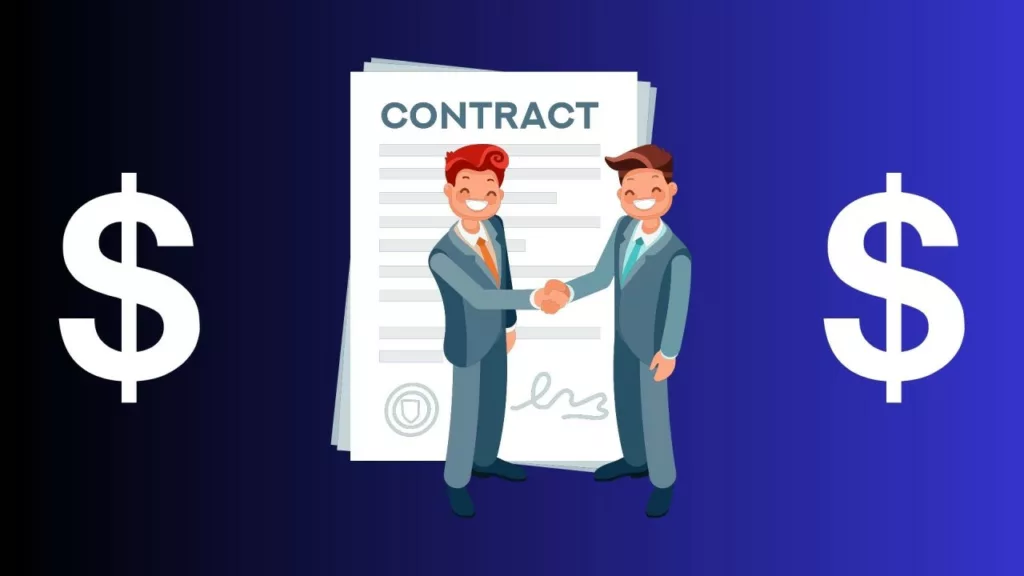
Wholesaling in real estate is an investment strategy that involves finding discounted properties and then quickly reselling them to other investors for a profit. The goal of wholesaling is to identify properties that can be purchased at a significantly lower price than their market value and then assign the contract to a cash buyer willing to close on the deal quickly.
Wholesalers need to have a thorough understanding of the other investment strategies. The cash buyers will be investors looking for rental houses, flips, and BRRRR deals. As a result, a successful wholesaler will understand the needs of those buyers.
The steps for wholesaling real estate are as follows:
1. Finding potential properties
Wholesalers look for the same type of properties as other investors. The techniques for finding rentals and flips will also apply to wholesaling real estate.
2. Negotiating a purchase agreement
Once a property is identified, the wholesaler will negotiate a purchase agreement with the seller. The agreement typically includes a clause allowing the wholesaler to assign the contract to a third party.
3. Finding a cash buyer
After securing the purchase agreement, the wholesaler will look for a cash buyer or rehabber interested in the property. They may reach out to their network of investors or advertise the property online.
4. Assigning the contract
Once a cash buyer is identified, the wholesaler will assign the purchase agreement to the buyer for a fee, typically ranging from $1,000 to $10,000 or more.
5. Closing the deal
The cash buyer will then close on the property, typically within a few weeks, paying the purchase price to the seller and the assignment fee to the wholesaler.
Assignment
An assignment involves the wholesaler assigning their rights and interest in the purchase contract to the cash buyer, who then steps into the wholesaler’s shoes and takes over the contract. In other words, the wholesaler transfers their contract with the seller to the buyer, who is responsible for closing the property. The wholesaler doesn’t need to invest funds into the deal.
Double Closing
A double closing, also known as a simultaneous closing or back-to-back closing, involves the wholesaler purchasing the property from the seller and then immediately reselling it to the cash buyer. In a double closing, the wholesaler becomes the legal owner of the property for a brief period and then transfers ownership to the cash buyer in the same transaction.
The advantage of a double closing is that it offers more control and flexibility over the transaction, as the wholesaler can negotiate both the purchase price with the seller and the sale price with the buyer. Sometimes, a double closing happens on the same day, with the buyer’s payment funding the purchase price. The wholesaler doesn’t need to invest funds into the deal.
Income
Wholesaling produces income by finding discounted properties and assigning the purchase contract to a cash buyer or rehabber for a fee. The wholesaler essentially acts as a middleman between the seller and the cash buyer and earns a profit by selling the purchase contract at a higher price than they paid.
For example, a wholesaler finds a distressed property that is worth $100,000 on the market but is being sold by the owner for $60,000. The wholesaler negotiates a purchase agreement with the owner for $60,000 and then finds a cash buyer willing to pay $70,000 for the property.
The wholesaler assigns the purchase agreement to the cash buyer for a fee of $10,000, which is the difference between the purchase price and the sale price. The cash buyer then purchases the property for $70,000, and the wholesaler earns a profit of $10,000 without ever owning or investing in the property.
Expenses
The expenses involved with wholesaling are considerably lower than those involved in rentals and flips. These expenses are limited to the costs of finding the deal and are mainly marketing and advertising costs.
Pros of Wholesaling
Low financial risk: Wholesaling typically requires little to no money down, making it a low-risk investment strategy. Wholesalers don’t usually purchase the property, so they don’t have to worry about financing, repairs, or maintenance costs.
- Wholesaling allows investors to profit quickly, as deals can often be closed within a few weeks. This means investors can generate income without waiting for long-term appreciation or rental income.
- Wholesaling does not typically require a real estate license, which means that investors can get started without going through the lengthy and expensive process of obtaining a license.
- Wholesaling requires very little upfront money and no credit. The wholesaler does not need the funds to purchase or the credit to obtain a mortgage.
Cons of Wholesaling
- While wholesaling can offer quick profits, the profit margins can be limited. This is because the wholesaler can only earn a profit on the difference between the purchase and sale prices, which may not be significant in some cases.
- Wholesaling requires strong negotiation skills to secure the property at a discounted price and to negotiate a higher sale price with the cash buyer. Those without strong negotiation skills may struggle to find profitable deals.
- Wholesalers must be careful to maintain a good reputation within the industry, as negative reviews or feedback could make it difficult to find future deals. This requires professionalism, honesty, and transparency in all transactions.
How Much Should You Pay?
Real estate investors who hold rentals or flip houses will be the end buyer for the wholesaler. As a result, the wholesaler should pay less than other investors in order to add a fee. For more information on how much to pay, read up on what to pay for a rental house and a flip investment.
Special Notes on Wholesaling
Cash buyers are essential to wholesalers because they are typically more willing and able to purchase properties quickly than buyers who require financing. Cash buyers can close on a deal much faster than buyers needing financing.
This means that a wholesaler can quickly recoup their investment and earn a profit without waiting for the lengthy financing process. Additionally, cash buyers are often experienced investors familiar with the real estate market and are more likely to recognize the value of a discounted property.
Wholesale: The selling of goods to be retailed by others.
A good wholesaler should understand market value, renovation costs, and the basics of a good investment (defined above). It’s essential to bring great deals to the cash buyers, not overpriced properties that the end buyer must negotiate. This is not what cash buyers look for in a wholesaler, and they will soon stop dealing with those who present overpriced properties on a routine basis.
Don’t mislead the seller. It is important to ensure the seller understands that the wholesaler is not buying the property but wholesaling it to another buyer. When a wholesaler presents themselves as a buyer, it causes complications further into the process. Preserve your reputation and always act ethically.
Creative Strategies
Creative strategies in real estate investing refer to unconventional approaches that investors can use to maximize their profits, minimize risks, and achieve their investment goals. Here are a few examples of creative strategies in real estate investing:
- Seller financing: This strategy involves the seller providing financing to the buyer instead of the buyer securing a traditional mortgage from a bank. This can benefit both the seller and the buyer, as the buyer may be able to purchase the property with a lower down payment, and the seller can earn interest on the financing. However, in most cases, the seller will sell at a premium when offering financing.
- Lease options: A lease option is a contract allowing a buyer to lease a property for a specified period, with the option to purchase the property later. This strategy can benefit investors who want to control a property and potentially earn rental income while waiting for property values to increase. When a buyer uses a lease option, it’s often a sign that they can’t get the agreed-upon price on the open market; the investor is not getting a good deal.
- Subject-to financing: This strategy involves the buyer taking over the existing mortgage on a property without securing new financing. This can benefit investors who want to purchase a property with little to no money down and are willing to take on the existing mortgage payments. In most situations, the seller will likely sell the property at a higher price when offering subject-to financing.
- Short-term rentals: Short-term rentals, such as through Airbnb, can be a lucrative strategy for investors who own properties in popular tourist destinations or cities with high demand for short-term rentals. Short-term rentals (AirBnB) have higher turner over costs, higher maintenance costs, and unpredictable legal and regulatory issues.
Creative strategies give more options to experienced real estate investors. However, it’s a good idea for beginning investors to avoid these creative approaches. Creative strategies are complicated and are rarely a win for the uninitiated investor; master the other strategies first.
Funding
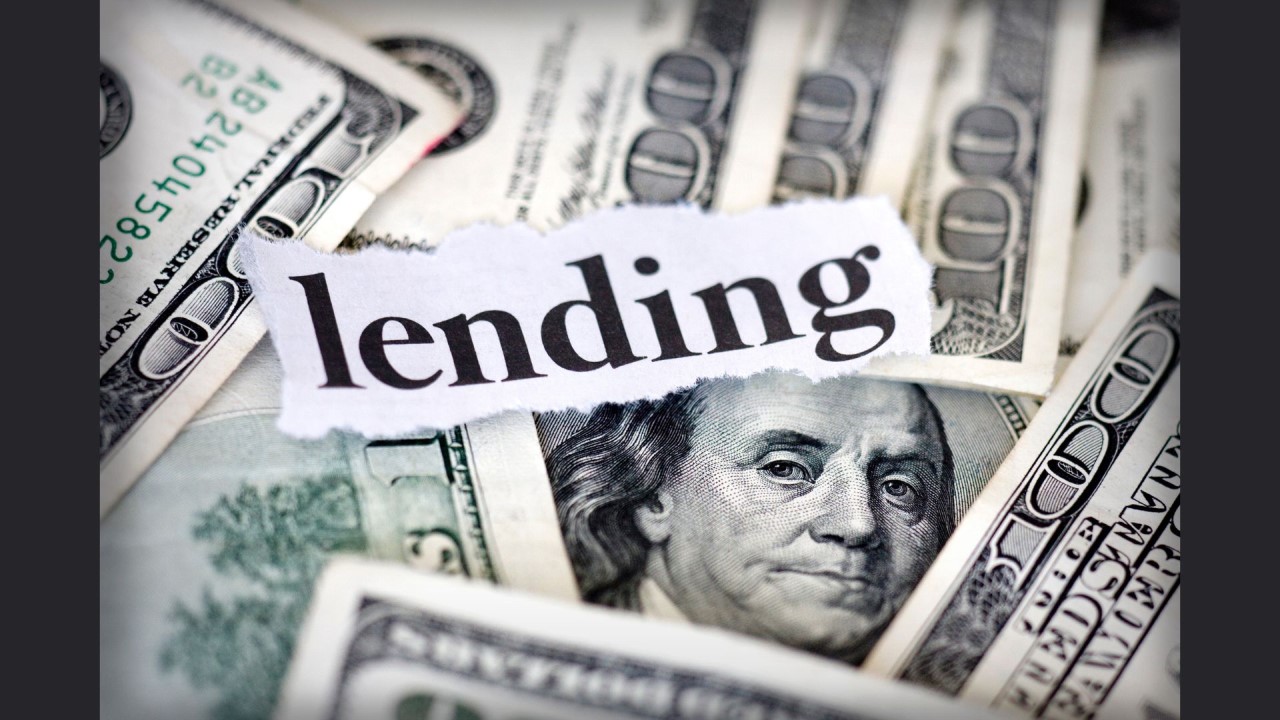
Funding for real estate investments can vary depending on the investor’s credit history, number of properties owned, and available financial resources. This section will provide an overview of lending options. For more detailed information, check out my guide to funding rental properties.
Good Credit and Few Properties
Traditional mortgages are often the best choice for investors with good credit and a small number of properties. These home loans typically have lower interest rates and longer repayment periods, making them more affordable and manageable for investors with limited property holdings.
The large financial institutions offering traditional mortgages operate under the Fannie Mae guidelines. Under these guidelines, individuals can have up to 10 financed properties, including their primary residence. Investors with more than ten financed properties must explore other financing options.
Good Credit and Many Properties
Fannie Mae, a government-sponsored enterprise that provides liquidity to the mortgage market, restricts the number of mortgages an individual can have. This restriction, known as the “Fannie Mare Rule,” limits an individual to 10 mortgages, and traditional lenders may have their internal guidelines and underwriting requirements more restrictive than Fannie Mae’s guidelines.
For this reason, investors exceeding the 10-mortgage limit may need to explore alternative financing options such as portfolio loans, commercial loans, or other non-conventional financing options. These alternative options may have higher interest rates, shorter repayment terms, or other unique requirements.
For investors with good credit and a large number of properties, portfolio loans or commercial loans may be a more appropriate option. Portfolio loans allow investors to leverage their existing real estate holdings to secure funding for additional properties, while commercial loans may be better suited for large-scale projects.
Local community banks typically offer commercial loans. The banks may provide unique advantages for borrowers seeking loans on residential real estate. These banks often have a better understanding of the local market and may be more familiar with the unique challenges and opportunities in the area. In addition, they have more flexibility in their lending criteria and be more willing to work with borrowers who may not meet the strict requirements of larger national banks.
Local community banks can be a viable option for investors seeking commercial loans, particularly for those who value personalized service and a strong relationship with their lenders. However, investors should also explore other financing options and compare rates, terms, and requirements from multiple lenders to ensure they get the best financing solution. In most cases, a commercial loan will have higher interest rates and a shorter term than a traditional mortgage.
Poor Credit and Little Money
Hard money loans may be a viable option for investors with a lower credit score and limited financial resources. These loans are typically provided by private lenders and secured by the purchased property, with higher interest rates and shorter repayment periods. Hard money lenders will be more interested in the deal’s specifics than the borrower’s creditworthiness.
An investor may use a hard money lender if they have found a good deal that requires quick financing. Hard money loans typically have faster approval processes and disbursements than traditional lenders, allowing investors to act quickly and secure the property. Additionally, hard money lenders are much more willing to lend to investors with poor credit or limited financial resources, making obtaining financing for the deal easier.
Finding Good Deals

The most challenging part of investing in real estate is finding acceptable properties. Investors must buy properties at a significant discount to market value. By definition, these will not be properties selling on the open market.
You already know what makes a good deal. A rental house in which you can invest less than 50 times the month’s rent or a flip place that will enable you to invest less than 70% of the after-repair value. The challenge is finding these deals.
Houses that make good deals
When it comes to finding good deals in real estate, there are only two types of houses that typically fit the bill: houses that no one else knows are for sale and houses that no one else wants.
Houses No One Else Knows are For Sale
When only a single investor is pursuing a property, they have greater negotiating power. If many people are aware that a property is for sale, it is almost impossible for it to sell at a discount to market value. In addition, if an excellent deal is advertised, multiple buyers compete for it, running the price up, and the property sells near market value.
In most cases, these properties must sell quickly. The owners do not have time to list the property with an agent, find a buyer, and wait on a closing.
The list below is an example of why a house may need to sell quickly.
- Divorce
- Inherited Property
- Extra Hassle
Houses No One Else Wants
When a property is widely advertised, but no one else wants it, there is a potential to find a great deal. These will be houses with problems that scare off other buyers.
The list below includes some of the types that can turn off buyers:
- Pest infestation
- Pet odors
- Mold issues
- Title problems
- Dangerous tenants
Motivated Sellers
A motivated seller is a property owner with a compelling reason or urgent need to sell their property quickly. The reasons a seller is motivated can vary but typically include financial, personal, or circumstantial factors. In the seller is not motivated, they might as well list the property with an agent and wait for top dollar.
Motivated sellers are often more willing to negotiate on price and terms to close a deal quickly. This can make them an attractive target for real estate investors looking for below-market deals or distressed properties.
How to Find Houses
Networking
Networking is one of the best ways for real estate investors looking to find deals and build their businesses. By building relationships with other professionals in the industry, investors can gain access to a broader range of opportunities, including off-market deals, joint ventures, and other profitable investments.
Networking can take many forms, including attending industry events, joining online forums and social media groups, and participating in local real estate associations or investment clubs. By staying engaged in the community and building strong relationships with other professionals, investors can position themselves as experts in the industry and increase their chances of finding profitable deals.
My Experience with Networking
I closed on a flip deal I found through networking a few months ago. A real estate agent sent me the deal because the house was in such bad shape it was unlikely to sell on the market. I worked the deal through the agent, paid his commission, and he got credit by listing the property the day I closed.
Postcards
Real estate investors can use postcards as a targeted marketing tool to find potential deals and generate leads. Postcards can effectively reach homeowners who may be motivated to sell their property, including those facing financial difficulties, who are in foreclosure, or who have recently inherited a property.
To use postcards effectively, real estate investors typically start by identifying the neighborhoods or areas where they want to focus their marketing efforts. They may use public records, real estate listings, or other resources to find investment properties that fit their investment criteria and have a high potential for profitability.
Next, real estate investors can create postcards highlighting their services and offering a personalized message that resonates with the recipient. The postcards may include information about the investor’s track record, the benefits of selling to an investor, and a call to action to contact the investor for more details.
Real estate investors can then send the postcards directly to homeowners in the targeted area through direct mail or a mailing list service. By sending postcards to a targeted audience, real estate investors can increase their chances of finding motivated sellers and potential deals that may not be available on the open market.
My Experience with PostCards
When I first sent postcards, the response was overwhelming. I got hundreds of calls, way more than I could handle, and had to hire someone to work some leads.
In this instance, I sent 4,000 postcards, which cost about $2,000. It was very time intensive, and I ended up closing three deals. I continued sending postcards for years, and eventually, they stopped being effective. I think I saturated the market, but I intend to return to this approach later this year.
Website
A custom website can be a great way for real estate investors looking to find deals, attract leads, and grow their businesses. By leveraging the website’s features and capabilities, investors can stay ahead of the competition and position themselves for success in the industry.
A custom website should include lead generation forms that capture potential clients’ information, contact details, and property preferences. This information can then be used to follow up with potential leads and close more deals.
The number one way I have found profitable real estate investments is by having a custom website. This allows motivated sellers to contact me directly.
Motivated sellers often search for phrases such as “sell my house fast” or “sell my house as is.” If an investor’s website is compelling and shows up on page one of a Google search, motivated sellers will contact them.
I have a simple wesbite geared to helping people sell their house fast. The number thing is for the site to be simple and effective. It doesn’t need to be splashy, or filled with irrelevant content.
Real estate investing is a competitive field. If an investor can’t reach the top of Google, they can purchase ads. These ads appear before organic (free) results; an investor pays each time the ad is clicked. In recent years, this is how I have found the most deals.
My Experience with a Website
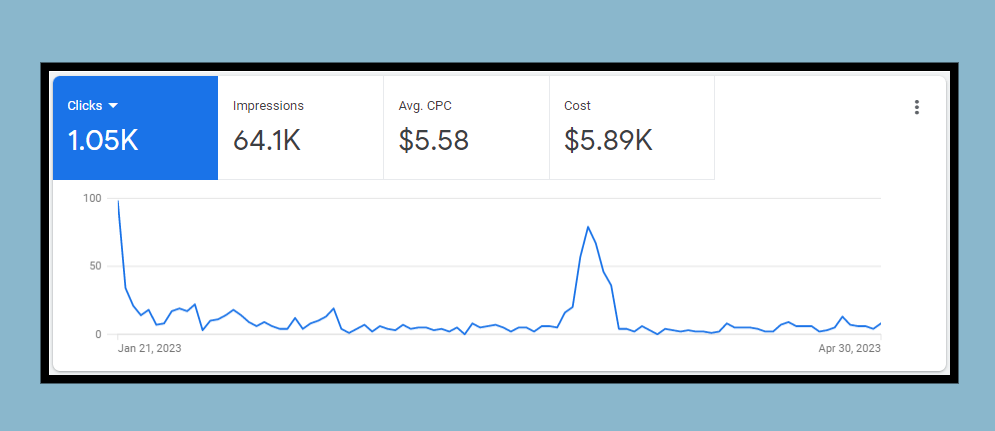
In the last 14 weeks, I have spent almost $6,000 on Google ads. My ads have received 1,005 clicks, 51 people submitted their information, and I have closed three deals. That was two house flips and another seller with two rental properties. Any one of these would have been worth the ad cost.
If you need a website, look into the Investor Carrot. They provide a one-stop resource for your real estate investing website, SEO, and advertising.
Wholesalers
Wholesalers find below-market deals and then assign their purchase contracts to investors for a fee. Real estate investors can access a broader range of deals and potentially find profitable investment opportunities by working with wholesalers.
One way to find wholesalers is by attending local real estate investment clubs or networking events. These events provide a platform for investors to meet and connect with other industry professionals, including wholesalers looking to sell their contracts. By building relationships with wholesalers and staying in touch, real estate investors can be among the first to hear about new deals and potentially secure them before they hit the open market.
My Experience with a Wholesaler
I have not had success working with wholesalers, but others have. Most wholesalers in my area do not bring good deals. They frequently overvalue the property and underestimate the renovation area.
Wholesalers would have more success if they followed the recommended approach found in the wholesaling houses section.
Cold Calling
Cold calling can be a proactive way for real estate investors to find deals and generate leads. However, it requires a targeted approach and a willingness to put in the time and effort to build relationships with potential sellers.
Real estate investors can use public records, online resources, or marketing lists to identify properties or homeowners who may be motivated to sell. For example, investors may target homeowners who are in foreclosure, have recently inherited a property, or have distressed or vacant properties.
Once potential sellers have been identified, real estate investors can begin the cold-calling process by contacting them directly. This may involve making phone calls, sending text messages, or using other communication methods to introduce themselves, explain their services, and offer solutions to the seller’s needs or challenges.
Real estate investors should be prepared to build rapport with potential sellers and listen to their concerns and priorities to be effective. They should also be ready to provide valuable information, such as market insights or possible solutions, to help the seller decide whether to sell their property.
While cold calling can be time-consuming, it can also be a valuable way for real estate investors to build relationships, generate leads, and potentially secure profitable deals. By focusing on a targeted audience, providing value to potential sellers, and building rapport, investors can increase their chances of finding motivated sellers and growing their businesses.
My Experience with a Cold Calling
While I have not directly used cold calling to find real estate deals, I have partnered with someone who has seen the results firsthand. By using a targeted approach and a willingness to build relationships with potential sellers, my partner was able to generate leads and secure profitable deals that may not have been available through other methods.
Through my partner’s experience, I learned that cold calling could effectively find motivated sellers and generate leads, but it requires a proactive and persistent approach. By identifying specific properties or homeowners who may be motivated to sell and reaching out to them directly with a compelling message, investors can increase their chances of finding profitable deals and growing their portfolios.
Conclusion
The purchase price directly affects profitability, cash flow, risk, and the ability to finance the investment, making it essential for investors to carefully evaluate and ensure that it aligns with their investment goals and objectives. By following this rule, investors can protect themselves against uncertainty and increase their chances of long-term success in real estate investing.
The article covers five real estate investment strategies: rental properties, flipping houses, the BRRRR method, and wholesaling houses.
Real estate investors have many funding options based on their credit history, number of properties owned, and financial resources. These choices include traditional mortgages, commercial loans, and hard-money lenders.
There are various ways to find good deals in real estate investing, including networking, postcards, websites, wholesalers, and cold calling. A savvy real estate investor will use a combination of these methods to find the best deals.
